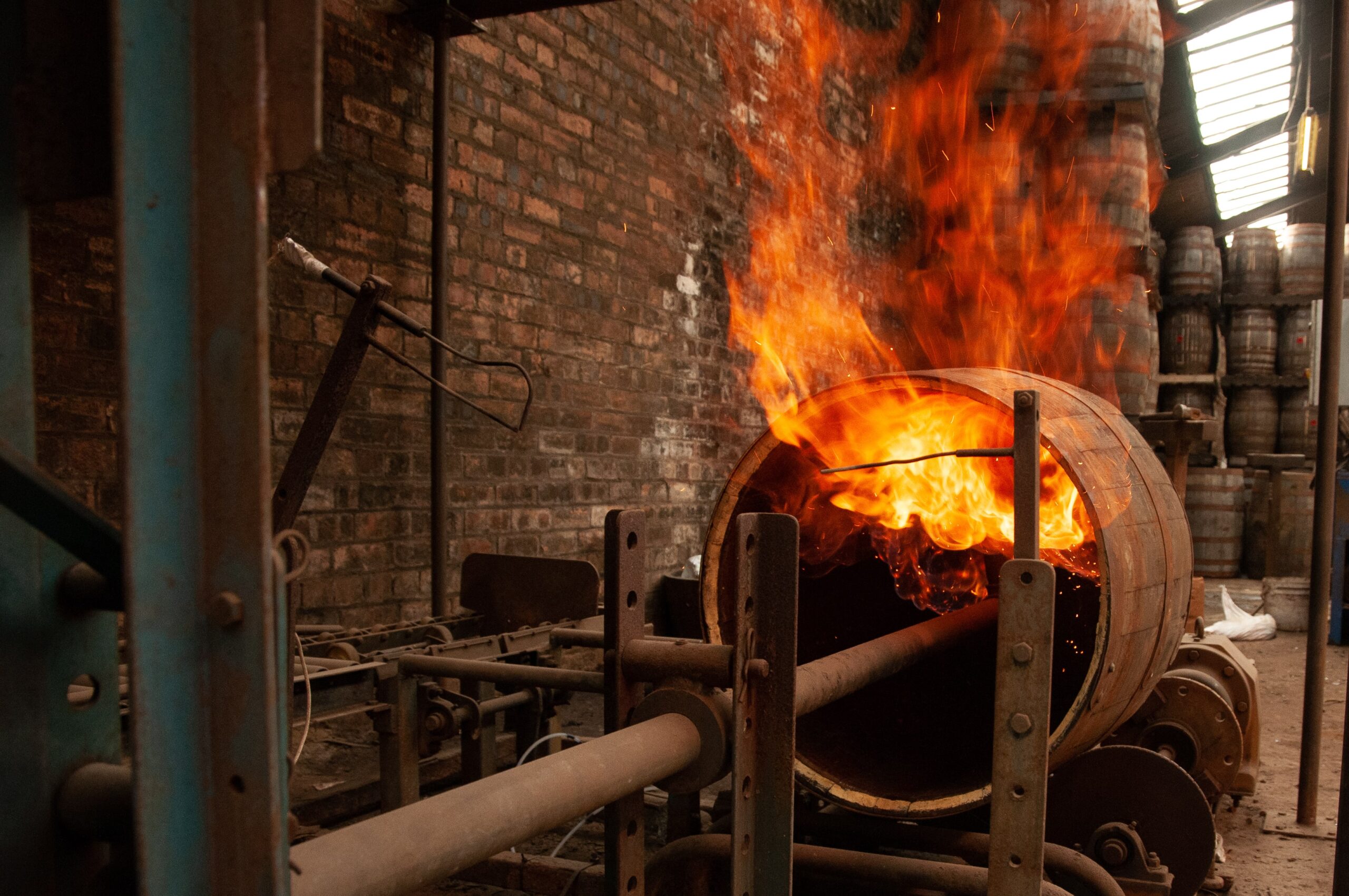Daddy, chill. I’ll explain.

This post is actually a special one.. on account of I’m writing it for my first ever newsletter feature. Thanks to Doug Smith for the plug !
So a topic Doug wanted me to cover was STR casks and what are they ? Truthfully, I had not a lick of a clue. Soooo to save you all a Google deep dive, I did it for you. You’re welcome. ?
Jumping right into it !
STR stands for Shaved (or scraped),

Toasted,

and Re-charred. [Whiskipedia.com]

Basically a barrel facelift of sorts.
Whaaaat ?? Let’s start from the top.
The man credited with inventing the STR technique is the late Dr. Jim Swan (1941-2017). He was nicknamed “The Einstein of Whisky” and served a good portion of his career as a whisky consultant. He served as a resource for distilleries worldwide for his technical expertise.
According to Bevvy.com, STR casks arose from an increased demand for oak casks. This gap in supply and demand was caused in part by a resurgence of popularity in bourbon (which is aged in new oak casks).
In order to take advantage of an untapped source of these wood barrels, Dr. Jim Swan decided to make use of oak barrels that had previously been used to age red wine. Why red wine ? I’m guessing it’s because red wine has some fruity aspects that can add some really delicious facets. I’d rather have fruity notes than ex-tequila notes or whatever in my whiskey, amirite?

However, red wine stained casks also have tannins and sulfurs leftover in the wood that would leave undesirable flavor components in the whisky. In other words, all the shitty flavors you don’t want. So, to remedy that, the stained wood in the barrel is shaved down to certain specifications that removes most of the red wine residue, leaving behind only a small portion, before being toasted and re-charred. The small portion that is left behind is what imparts the complex fruity notes into the whisky.
Toasting helps break down parts of that fresh wood into wood sugars before being charred. Charring creates a natural carbon filter that further gets rid of unwanted flavors and also helps the whiskey seep deeper into the wood for flavor extraction. [whitepeakdistillery.co.uk]
The final product results in a more even blend of woods and fruits in the whiskey. Without the bitter tannins or strong oaky vanillins.
Some notable distilleries that make use of STR casks include but are not limited to: [whiskipedia.com]
- Kilchoman
- Annandale
- Kingsbarns
- Nc’nean
- Cotswolds
- Penderyn
- Kavalan
- Gouden Carolus
My unofficial official whisky consultant, Brendan McCaron, told me Glenmornagie has used STR casks also. Specifically for Glenmorangie Milsean, he mentioned.
STR casks fall under the larger umbrella of “cask rejuvenation” —scraping down the used wood to reveal those virgin layers in order to get more fills or uses out of a barrel. The inner layer is like a tea bag, and once it’s been used, you can scrape some of the wood down to a fresh layer, then re-toast/char and re-use.
There is obviously a limit to how many times a barrel can be ~rejuvenated~. Much like there should be limit on how many times a person can get a facelift before it starts looking weird lol. Re-use but don’t abuse !

STR Cask Conclusion
Opting to use rejuvenated casks is cost effective and can create a milder flavor profile for the whisky in comparison to virgin casks.
Ok, I think I covered the basics. One of these days I’ll have ChatGPT write all my blog posts but regardless, thank you for reading ?
Have you tried any whiskies aged or finished in STR casks ? If, so what are your thoughts ? Reach me, Hanna, at wickedwhiskies.wordpress.com
Thanks again to Doug Smith for the article feature. As always, til next post ! Cheers x x



M&H also uses STR casks. Virgin casks are mostly used for bourbons. Most scotch makers use first fill bourbon casks and not virgin casks.